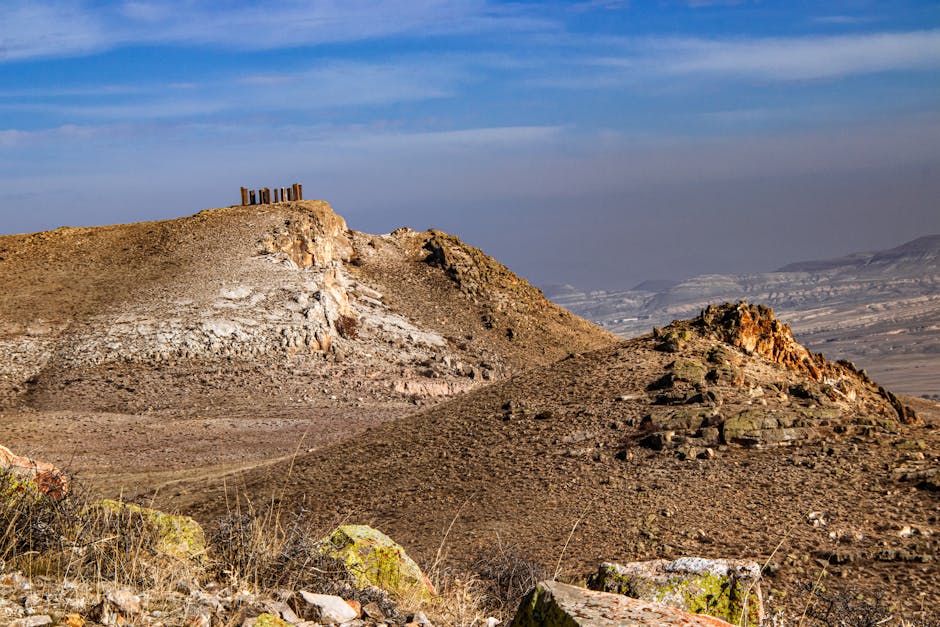Clay figurines unearthed in El Salvador may be puppets whose poses sent a message to observers thousands of years ago. Described March 5 in Antiquity, some of the figurines have moveable heads with expressive faces, and they may contain hints about the unknown people who created them.
“They’re actually amazing,” says Jan Szymański, an archaeologist at the University of Warsaw in Poland and a coauthor of the study. The three largest figurines are about one foot tall and are naked and bald.
In 2022, Szymański and his colleagues found the figures at San Isidro, a steep site among fields of sugarcane and coffee, at the top of an earthen mound that may have once been a pyramid. As they meticulously removed layer after layer of earth, they found the first figurine lying face down. Working late into the evening, they cleaned off the dirt, and a face emerged.
“On the one hand, the face has this empty, absent look,” Szymański says. The figurine’s eyes appeared to stare into the distance and its mouth was open. It seemed aloof, or maybe full of disdain. But its expression seemed to change as the researchers turned its head. At a sharp angle, it looked a bit angry. Viewed from above, it looked perhaps scared. With the fading light, “we had this weird sensation that we found something eerie,” he says. After four days of excavation, the team had uncovered five clay figurines in a layer dated to 410–380 B.C.
How were these figurines used?
The heads of each the three large figurines have a socket into which the neck fits. A string threaded through two holes in the top of the head can be used to turn the head. The lack of clothes and jewelry “may be because they were made to be versatile,” depicting different types of people, Szymański says.
Once the team reconstructed the figures’ positions in the ground relative to each other, they noticed that, if the figures were standing upright, they would be in a line facing west. That suggested a purposeful arrangement, meant to convey a message, the authors wrote. “From the very beginning, we saw them as puppets—as actors made of clay,” Szymański says.

Inspiring exploration for over 130 years
Subscribe now a get a free tote
Other clay figurines have been found in Mesoamerica, a region that includes parts of Mexico and Central America. But most are broken pieces, sometimes in middens, ancient household trash pits. So far, archaeologists have only unearthed one other set of intact figures from the spot they were likely laid to rest.
In 2012, archaeologist Christa Schieber de Lavarreda found a group of six figurines at a royal Maya tomb at a site called Tak’alik Ab’aj in Guatemala. Based on how they would have been standing, these appeared to have also been arranged purposefully. Four stood at the cardinal directions, echoing the Maya representation of the universe. Two others faced east and west, toward the rising and setting sun, says Schieber de Lavarreda who works at Tak’alik Ab’aj. It has a “profound meaning,” she says, “the cycle of life is dying and giving birth a new life.” It ritualizes an idea as a theater or dance performance does, she says.
More than ‘puppets’
It’s not clear what civilization made the figures found at San Isidro. Archaeologists first visited the site in 1980, and it remains largely unexcavated. From Maya art and writing, archaeologists have learned the importance of ritual and symbolism in Mesoamerica. “To use objects in recreation is to actually give them life,” Szymański says. The figurines could have been used in many rituals before what may have been their last ritual atop the pyramid. With their open mouths, they could have been singing, speaking or possibly uttering spells, Szymański says.
You May Also Like
“The fact that these mouths are open really means something,” says Julia Guernsey, an art historian at the University of Texas at Austin who wasn’t part of the new study. Open mouths also suggest feeding, she says. Her team has found that residues on the mouths of clay figurines from Guatemala contained traces of starches that would have been eaten by local peoples. She’s curious whether people fed these figurines from San Isidro, too.
The figurines may have been far more than puppets, says Bárbara Arroyo, an archaeologist at the Universidad Francisco Marroquín in Guatemala City. It’s likely they had multiple purposes, she says. She’s somewhat skeptical about the importance of their arrangement. The small figurines would have been hard for viewers on the ground to see positioned at the top of a structure, she says. There may be other explanations, for instance the figures could have been wrapped as a bundle and placed there as an offering.
Still, “it’s important research,” Arroyo says. Archaeologists tend to overlook El Salvador because many of its sites have earthen architecture that is more difficult to excavate and restore for public viewing than places that had been built with stone. But its sites contain clues to Mesoamerica at the time, for instance, in items that moved through or likely originated there.
(Read about some of El Salvador’s other ancient societies.)
Who were the ancient ‘puppeteers’?
San Isidro, itself, might have been important in ancient times. “Because of its size and because of its control over the only natural route connecting the coast with the inland, we think it was sort of a hub controlling trade,” Szymański says.
Szymański aims to learn more about the people who used these figurines and how they were connected to the Maya and other surrounding peoples. One clue is an object found buried near the figurines—a jade pendant in the shape of an avian god typical of Costa Rica at the time. The stone was probably mined from Guatemala and could have been shaped in Costa Rica before its return to San Isidro, Szymański says. Meanwhile the varied appearance of the large and small figurines from San Isidro may hint at the different ethnicities of groups that came together there, Arroyo says.
El Salvador may have played a more central role in Mesoamerican culture at this time than many acknowledge. “El Salvador wasn’t just a passive receptor of cultures created elsewhere,” Szymański says. “It was actively participating in this exchange and creating some new qualities.”



